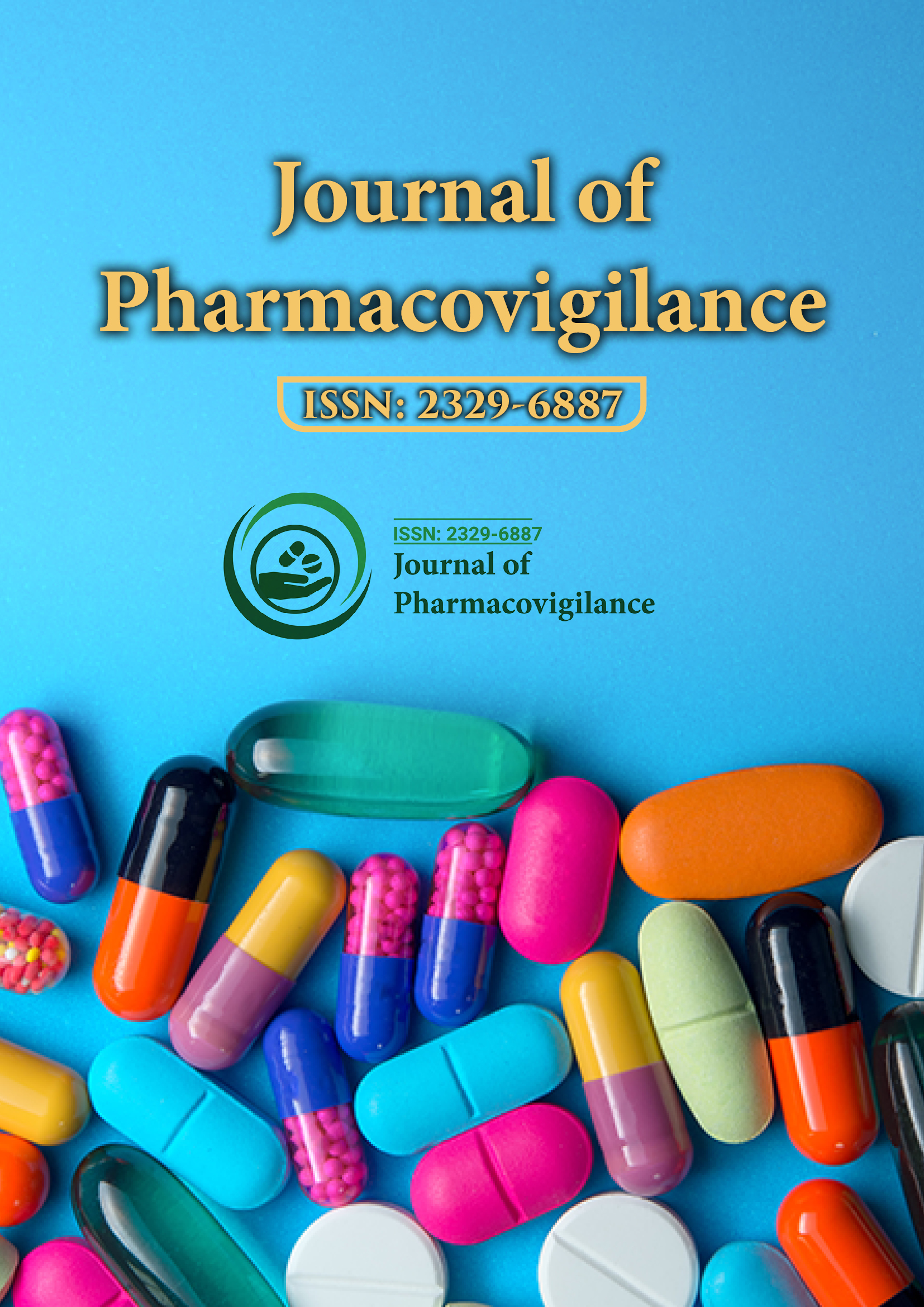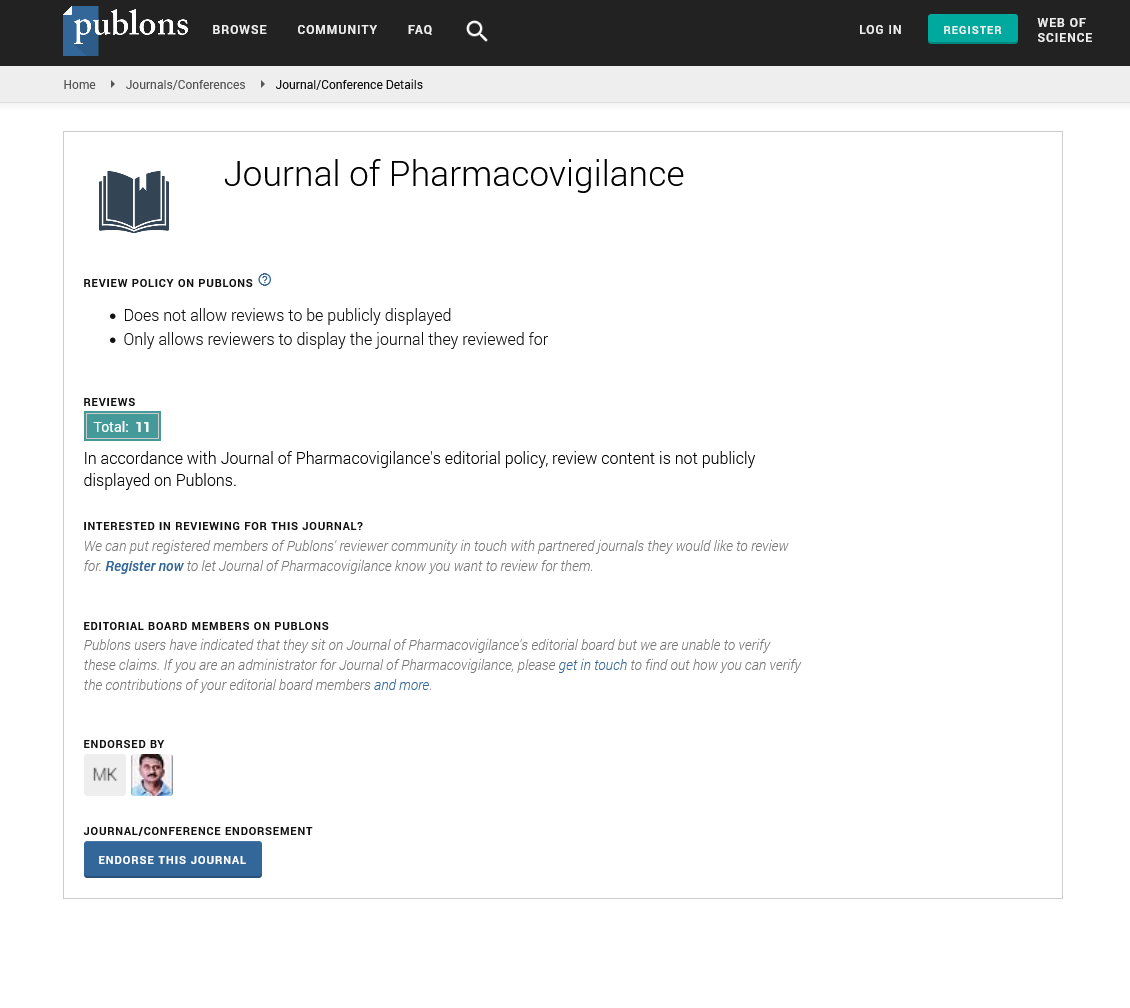Indexed In
- Open J Gate
- JournalTOCs
- The Global Impact Factor (GIF)
- RefSeek
- Hamdard University
- EBSCO A-Z
- OCLC- WorldCat
- Publons
- Euro Pub
- Google Scholar
Useful Links
Share This Page
Journal Flyer

Open Access Journals
- Agri and Aquaculture
- Biochemistry
- Bioinformatics & Systems Biology
- Business & Management
- Chemistry
- Clinical Sciences
- Engineering
- Food & Nutrition
- General Science
- Genetics & Molecular Biology
- Immunology & Microbiology
- Medical Sciences
- Neuroscience & Psychology
- Nursing & Health Care
- Pharmaceutical Sciences
Commentary Article - (2024) Volume 12, Issue 4
Extracting Clinical Insights from Pharmacovigilance Data: Identifying Drug Interactions and Population-Specific Risks
Julie Simoes*Received: 20-Nov-2024, Manuscript No. JP-24-28259; Editor assigned: 22-Nov-2024, Pre QC No. JP-24-28259(PQ); Reviewed: 10-Dec-2024, QC No. JP-24-28259; Revised: 17-Dec-2024, Manuscript No. JP-24-28259(R); Published: 24-Dec-2024, DOI: 10.35248/2329-6887.24.12.495
Description
Drug interactions represent a significant concern in modern healthcare, with the potential to significantly impact patient safety and treatment outcomes. These interactions can occur when two or more medications are taken concurrently, leading to altered pharmacokinetics (absorption, distribution, metabolism and excretion) or pharmacodynamics (drug action at the target site). While numerous factors contribute to drug interactions, this essay will delve into the critical role of population-specific risks and how pharmacovigilance databases provide invaluable insights into these complexities. Populationspecific risks refer to the varying susceptibilities of different patient groups to drug interactions.
Pharmacovigilance databases play a key role in identifying and characterizing population-specific risks associated with drug interactions. These databases, which collect and analyze spontaneous adverse drug reaction reports, clinical trial data and other relevant information, provide valuable insights into realworld drug safety. One of the key strengths of pharmacovigilance databases lies in their ability to detect rare or unexpected drug interactions that may not have been identified in clinical trials. By analyzing spontaneous reports from healthcare professionals and patients, researchers can identify patterns and associations between drug combinations and adverse events, including those that are specific to certain patient populations. Furthermore, pharmacovigilance databases can be utilized to assess the impact of drug interactions on different patient groups. By analyzing data from diverse populations, researchers can identify populations at increased risk of specific drug interactions and develop targeted interventions to mitigate these risks. For example, by analyzing data from elderly patients, researchers can identify drug combinations that are associated with an increased risk of falls or cognitive impairment. In addition to identifying population-specific risks, pharmacovigilance databases can also be used to develop and refine drug interaction prediction These models, which utilize complex algorithms to predict the potential for drug interactions, can be invaluable tools for healthcare providers in making informed prescribing decisions. By incorporating data from pharmacovigilance databases, researchers can improve the accuracy and specificity of these models, leading to more effective and safer medication use. However, it is important to acknowledge the limitations of pharmacovigilance databases. Spontaneous reporting systems are inherently subject to underreporting, as not all adverse events are reported to regulatory authorities. Additionally, the information contained in spontaneous reports may be incomplete or inaccurate, making it challenging to establish a definitive causal link between drug interactions and adverse events.
Conclusion
Despite these limitations, pharmacovigilance databases remain invaluable tools for identifying and characterizing populationspecific risks associated with drug interactions. By continuously analyzing data from these databases and incorporating these findings into clinical practice, healthcare providers can make more informed prescribing decisions, minimize the risk of adverse events and improve patient safety. Moving forward, there is a need for continued investment in the development and refinement of pharmacovigilance systems. This includes improving data quality and completeness, enhancing data analysis methods and developing innovative approaches to data sharing and collaboration. Furthermore, there is a growing need for the integration of pharmacogenomics into pharmacovigilance. Pharmacogenomics, the study of how genetic variations influence drug response, can provide valuable insights into individual patient susceptibility to drug interactions. By incorporating pharmacogenomic data into pharmacovigilance databases, researchers can develop more personalized approaches to drug safety monitoring and risk management.
Citation: Simoes J (2024). Extracting Clinical Insights from Pharmacovigilance Data: Identifying Drug Interactions and Population-Specific Risks. J Pharmacovigil. 12:495.
Copyright: © 2024 Simoes J. This is an open-access article distributed under the terms of the Creative Commons Attribution License, which permits unrestricted use, distribution, and reproduction in any medium, provided the original author and source are credited.

